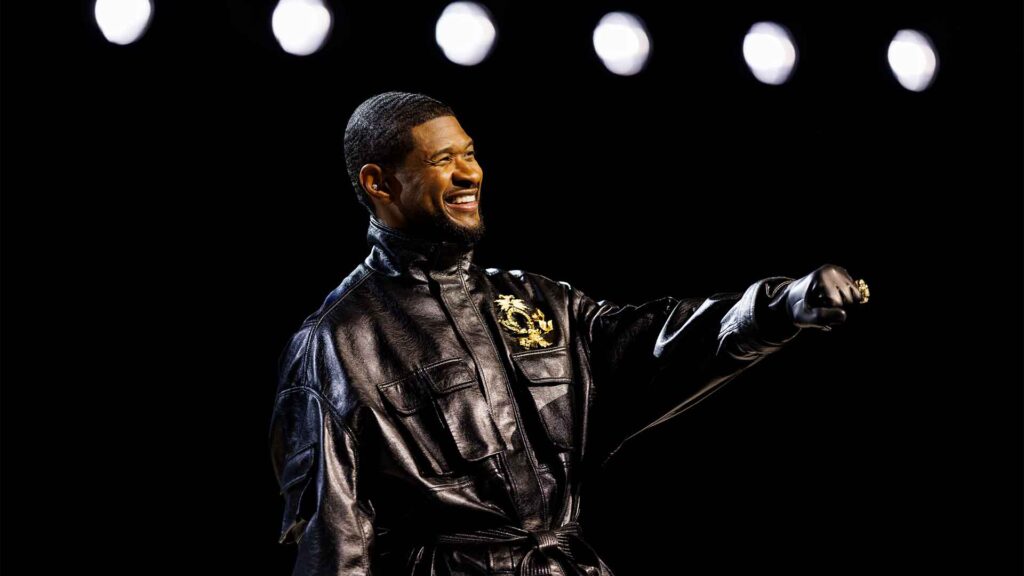As the lights dim and the stage is set at the Super Bowl Halftime Show, an electrifying performance unfolds that captures the attention of millions worldwide. This year, the spotlight shone on Usher, a music icon known for his incredible talent and showmanship. As he stepped onto the field, it was not just a performance — it was a monumental career moment that joined the ranks of legendary acts like Beyoncé, Prince, and Michael Jackson.
But amid the glitz and glamour, a surprising fact remains largely unknown: Usher, like his predecessors, wasn’t paid a performance fee for this career-defining gig.
With its history of spectacular performances, the Super Bowl Halftime Show has evolved into more than just a break in the game. It’s a cultural phenomenon that draws even non-football fans to the screen. The NFL provides the stage for these artists, but not in the way many would expect.
Instead of hefty paychecks, performers receive a token payment close to $1,000, based on a minimum wage union scale, per Esquire — a stark contrast to their usual booking fees, which can soar into the six or seven figures.
This arrangement might seem startling at first, especially when considering the scale of the event and the caliber of artists who grace its stage. However, the NFL covers all production costs, travel expenses, and logistical support, ensuring the spectacle is nothing short of mesmerizing. While it’s true that the artists aren’t directly paid for their performances, they’re compensated in a currency that, at this stage, is arguably more valuable than cash: exposure.
The Halftime Show offers an unparalleled platform for artists to showcase their talent to a global audience. Usher’s appearance, for instance, comes just as he’s about to release a new album and embark on a nationwide tour, timing that couldn’t be better for promoting his upcoming projects. The exposure can significantly boost music streams and sales, as seen in past performances. Artists like Shakira and Jennifer Lopez saw their music streaming numbers skyrocket after their 2020 show, demonstrating the immense impact of this unique stage.
The costs associated with such an endeavor are astronomical, with some performances, like Jennifer Lopez and Shakira’s, costing around $13 million (via 9 News). In certain cases, artists have even invested their own money to realize their creative vision, highlighting the importance and prestige of the opportunity. The Weeknd, for instance, put in $7 million of his own funds for his 2021 Halftime Show performance.
In a surprising twist, there have been instances where the NFL approached artists with a proposal that reversed the traditional payment model, suggesting that performers pay for the privilege of taking the stage (via Wall Street Journal). This idea was met with resistance and ultimately did not take hold.
While they may not receive a traditional paycheck for their efforts, the value of the exposure and the opportunity to be a part of history is, for many, worth its weight in gold. The Halftime Show will undoubtedly continue to be a highlight of the Super Bowl, eagerly anticipated by fans and artists alike for the magic and memories it creates.

